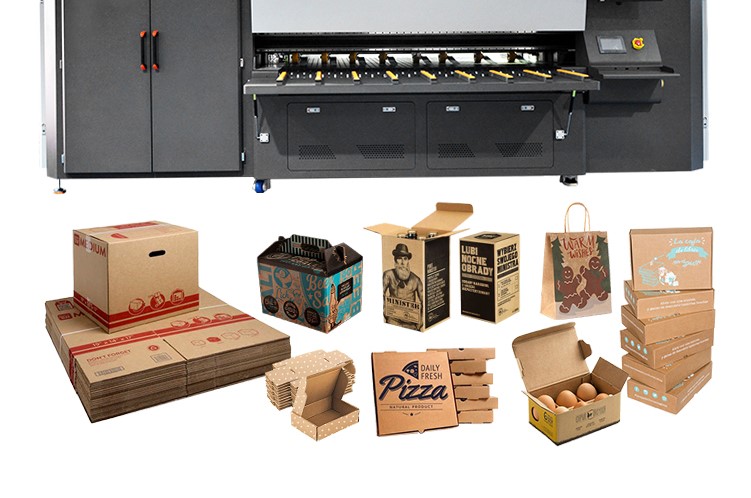1. Definition of Digital Printing Technology
.jpg)
2. Digital Printing Process
Step 1: Design and file preparation. Using graphic software (such as Adobe Illustrator, CorelDraw, etc.), the print file is created, finalized, and sent to the digital printer.
Step 2: Prepare ink and printing materials, then load them into the printer.
Step 3: Test the printer with a sample. The file is sent directly to the printer, and the ink is sprayed or pressed onto the material according to the digital command.
Step 4: Inspect the test print and start automatic batch production.

3. Advantages and Disadvantages
3.1 Advantages:
- Reduced production time: No need to create printing plates as in flexo, allowing rapid response to urgent orders.
- Flexible variable data and personalization: Easily change designs or content for each product or customer.
- Reduced waste: No need for multiple machine startups or plate preparations.
- Cost-effective for small quantities: Ideal for small or customized orders without requiring large print runs.
- High image quality: While not as smooth as offset printing, digital printing still produces sharp, vibrant images.
3.2 Disadvantages:
- Higher unit cost for large volumes: While setup costs are lower, ink costs per product are higher, especially for large runs.
- High investment cost: High-speed digital printers require significant capital.
- Limited printing speed: Although the technology is improving, it still cannot fully compete with flexo for mass production speed.
- Lower color durability: Colors may not last as long as traditional printing under harsh conditions.
4. Applications in the Packaging Industry
-
Fast-moving consumer goods (FMCG) packaging: Paper boxes, labels, premium paper bags.
-
Gift packaging and personal branding: Printing logos and custom designs.
-
Sample packaging: Enables businesses to quickly test designs before mass production.
-
E-commerce packaging: Optimized for speed and customization.

With the trend toward smart production and increasing demand for personalization, digital printing has become an essential solution for packaging companies to enhance responsiveness and production efficiency.
At Phu Vinh Phuc, we continuously update our printing technology—including digital inkjet printers—to provide customers with high-quality, flexible, and cost-optimized packaging solutions.
News other
- Vietnam Print Pack - International Printing & Packaging Industry Exhibition (15/09/2025)
- E-FLUTE CORRUGATED PACKAGING CARDBOARD PRODUCTS (15/08/2025)
- CARTON BOXES FOR FRUITS (24/06/2025)
- 10-layer Carton Box (29/05/2025)
- Vietnam’s Paper Packaging Industry 2025: Strong Growth and a Sustainable Future (16/05/2025)
- Bursting Strength Of Carton Box (09/05/2025)
- WHERE TO BUY 7-LAYER QUALITY CARTON BOX IN VIET NAM (18/04/2025)
- 'Shark' 46% (VnExpress) (04/04/2025)
- IMPORT SITUATION OF PAPER PACKAGING, PAPER BOXES AND CORRUPTED CARTON PACKAGING IN VIETNAM IN 20 (21/03/2025)


